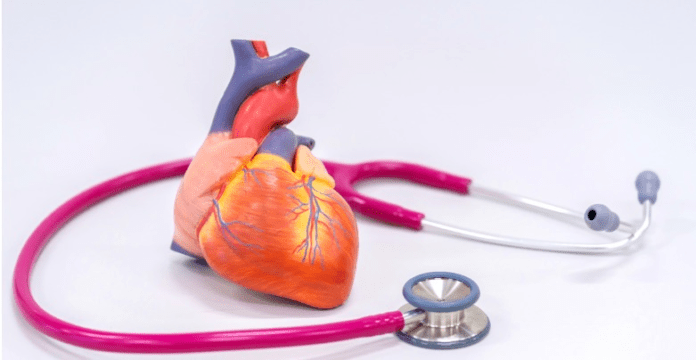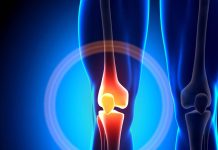There are few conditions more serious than atrial septal defect, or ASD. Unfortunately, many people who have this condition never seek treatment because they don’t know about it or because they are afraid of the potential complications. But if you have an ASD, you should know that there is hope for recovery and a full, healthy life with proper care and treatment. To help you through the recovery process, we’ve put together the following guide to living with atrial septal defect.
Introduction
A congenital cardiac defect is called an atrial septal defect (ASD). It is therefore present at time of birth. When your body is developing, the heart starts as two separate chambers. These chambers are connected by one large opening in the middle called a ventricle, or an atrium. The ASD causes one of the two lower chambers, or atria, to not close completely and form a natural barrier called the septum between them. As a result, blood can flow freely from one chamber to the other through this small hole instead of being pumped through both chambers.
A common symptom for those with ASDs is rapid breathing, or tachypnea. Another possible sign may be difficulty breathing when sleeping on their backs. Treatment for ASDs includes medication and surgery.
There are three types of surgical procedures performed to repair ASDs: open-heart surgery using cardiopulmonary bypass; closed-chest surgery; and transcatheter procedures such as balloon septostomy and laser ablation therapy where only small incisions are made in the skin during which cameras and instruments work through these small incisions.
Read More – How do Senior Living Communities Maintain the Health of Older Adults?
Superfoods You Should Swear by for Healthy Skin
Why Macro calculator is important for a healthy life?
Indepth into Atrial Septal Defect
Atrial septal defect (ASD) is a congenital heart defect that occurs when there is an opening in the wall between the atria. The hole allows blood from the left ventricle of the heart to flow directly into the right atrium. This extra volume of blood can overload and enlarge the right side of your heart, and also make it harder for your lungs to get oxygen.
An ASD can be surgically repaired through a procedure called open-heart surgery before symptoms start, or it can be closed after you have developed symptoms. A heart doctor will monitor you for any signs of developing symptoms such as breathlessness, difficulty exercising, and coughing up pink/reddish sputum. Once these problems develop, a specialist will diagnose the defect by listening to your chest with a stethoscope and performing an electrocardiogram (EKG).
A lot of people who live with ASDs say they feel relieved because they know they’re not alone in dealing with their condition. You may find that this list helps answer any questions you may have about living life after Atrial Septal Defect!
How is ASD diagnosed?
The most common way is through a routine physical exam. Your doctor will listen to your heart and watch you take deep breaths in order to look for any abnormal sounds or abnormal chest movements. The doctor will inform that if it is needed to do Atrial Septal Defect (ASD) repairs in Coimbatore for the condition after analysing the results.
ASD can also be detected by performing an echocardiogram, which is an ultrasound of the heart, or through a cardiac catheterization, which is an X-ray of the arteries that lead into and out of the heart. All of these tests are done in order to see if there are any defects in the wall between the two atria (the upper chambers) that would allow blood from one chamber to mix with blood from the other chamber during each heartbeat.
What are the long-term effects of ASD?
The long-term effects of ASD can range from life-threatening to minor. The most common serious complication is the formation of blood clots in the left atrium, which can travel through the opening in the septum and block blood flow in one or more veins. This condition is called pulmonary embolism, and it can be deadly without prompt treatment.
Other risks include stroke, heart failure, and death from infection. Less serious complications are more prevalent than serious ones. When you have ASD for a long time, your risk for atrial fibrillation increases; this is when your heart beats irregularly instead of beating regularly as it should.
It’s important that you know what signs to look out for so that you don’t miss a problem before it becomes severe!
How can I manage ASD?
To manage your ASD, you may need to take a beta blocker or calcium channel blocker. Depending on the severity of your ASD, you may also need surgery. You should also follow these guidelines: don’t exercise too much; avoid getting overheated; drink plenty of fluids; and eat a healthy diet.
Conclusion
Taking care of your health is the best possible thing you can do for oneself. The more active you are the less likely you are to have complications. Be sure that your doctor knows about any medications or supplements you’re taking so they don’t interfere with heart failure medications. If you’re going to drink alcohol, quitting is best and stay hydrated. Avoid smoking and avoid secondhand smoke as well. Take all prescribed medications as directed by your physician and if there is a change in medication dosage or schedule consult your physician first before making any changes.
















